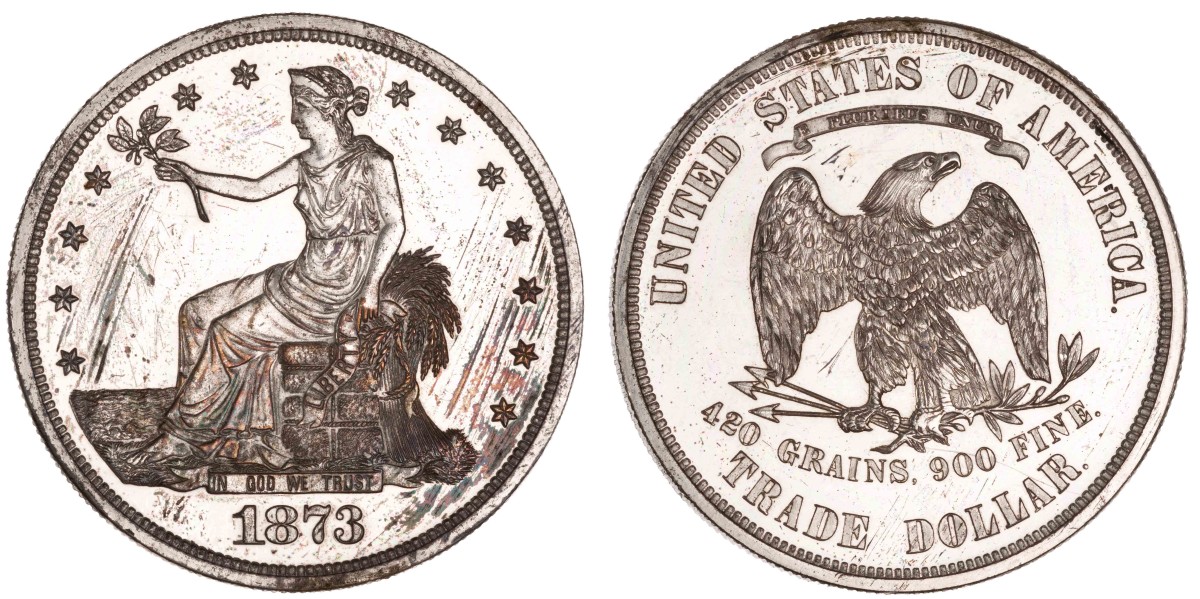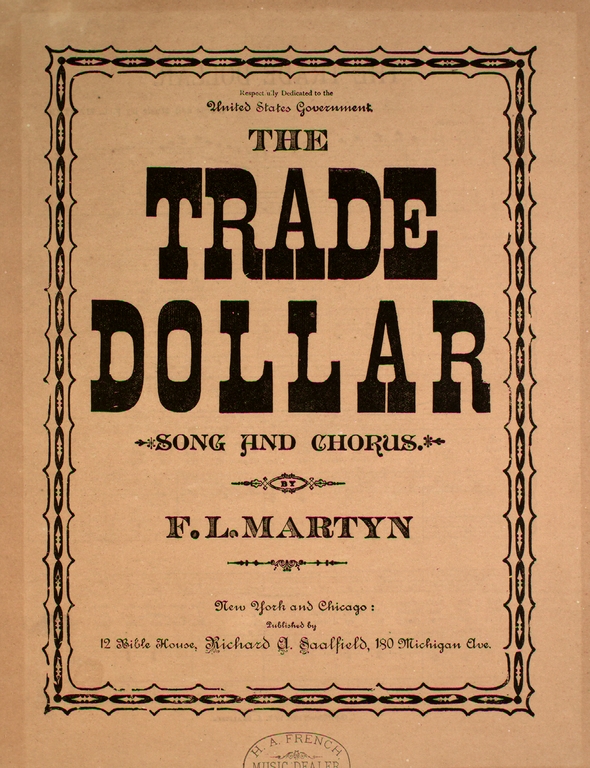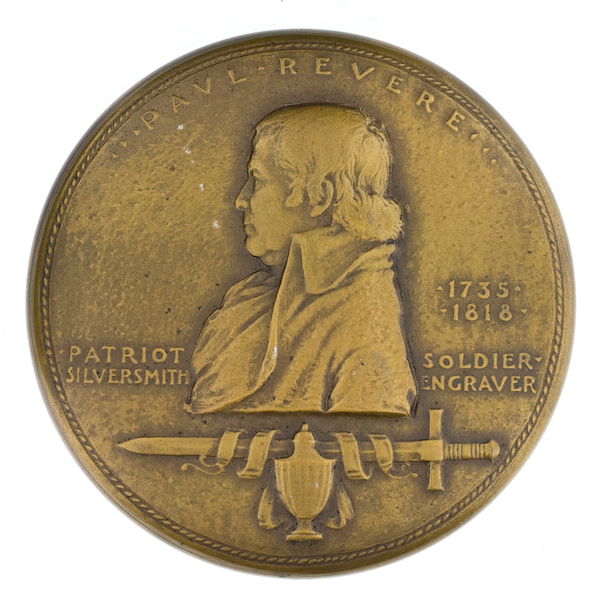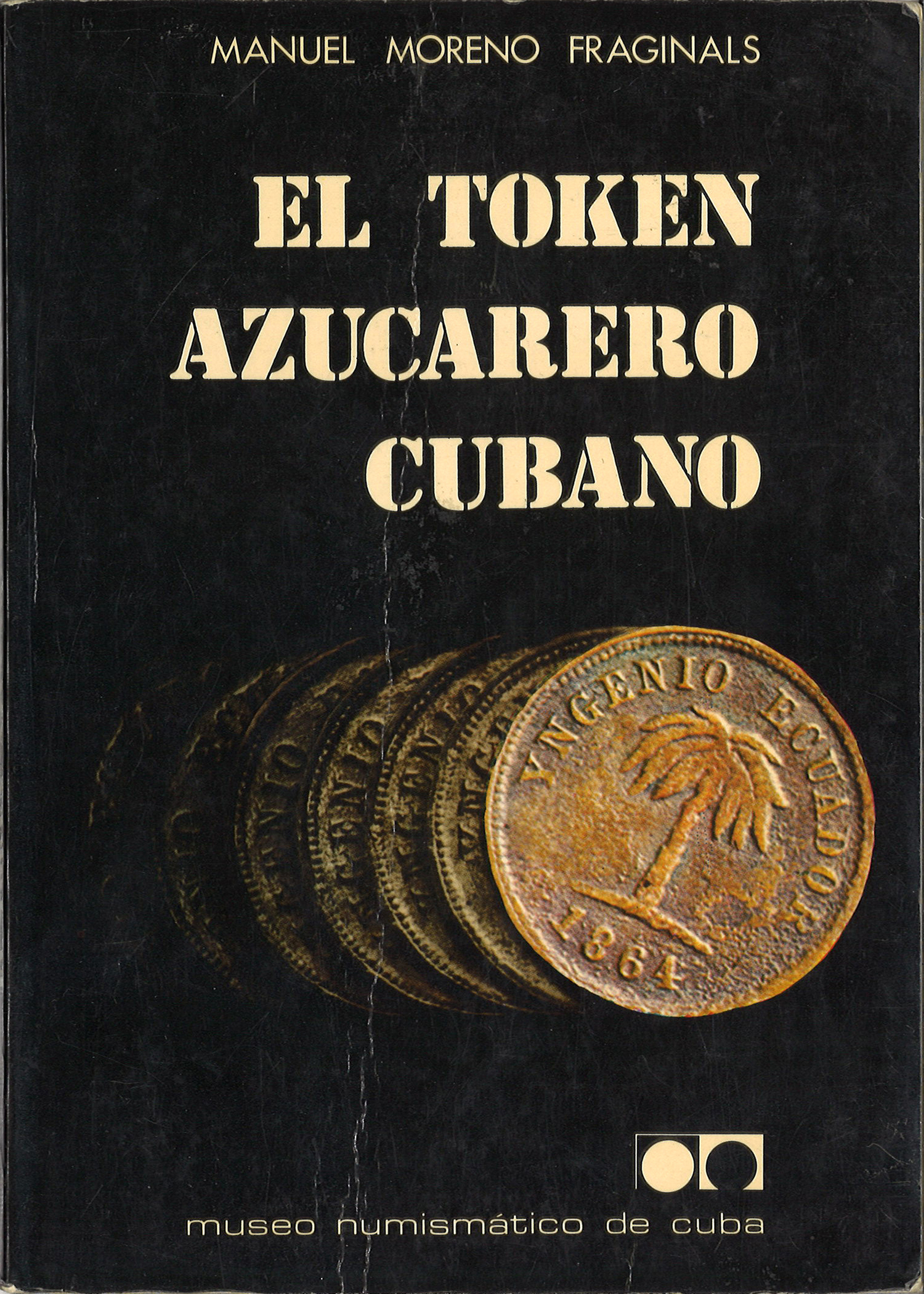A Trade Dollar Song and Chorus, 1883
This week at the International Numismatic Congress in Taormina, I gave a presentation about the US Trade Dollar, a silver coin that was minted between 1873 and 1878 expressly to facilitate trade with East Asia.
Its purpose was rather transparently expressed in the coin’s design, which features the figure of liberty seated upon a bounty of trade goods facing west to the ocean with an olive branch in hand. The reverse clearly delimits the national origin of the trade dollar in legend and symbolism, but more interestingly includes a precise description of its silver content: 420 GRAINS, 900 FINE. Quick math shows that it contained 378 grains of pure silver, which was more than the 371 ¼ grains of the ‘standard’ Seated Liberty dollar. This change was made to give the US trade dollar more appeal in the Chinese market, where Spanish dollars minted in the Americas and, after independence in 1821, Mexican dollars were the primary circulating medium. These had a silver content measuring between 374 and 377 grains, which meant that the new US trade dollar had a more silver and bullion value.
What the new US trade dollar lacked of course was both recognition and trust. Spanish dollars had been circulating through Asia in volume since the 17th century, and the shroffs who weighed and assayed foreign silver for Chinese merchant house were rightly skeptical of new coins. Still, by 1876 some 12 million US trade dollars had been exported, and the large number of extant ‘chopmarked’ coins, which were struck with punches bearing Chinese characters that indicated their acceptance by merchants, attested to their successful introduction internationally.
The fatal flaw that doomed the US trade dollar was not its ability to circulate abroad, but an unfortunate provision inserted into the Coinage Act of 1873 that allowed the trade dollars, which were intended for export, to circulate domestically as “legal tender at their nominal value for any amount not exceeding $5 in payment (Sec. 15).” Exactly how this stipulation was worked into the legislation has been much debated, but the practical effect was that when the price of silver declined, it became profitable for bullion dealers to have their silver coined into trade dollars. The new dollars were not exported, but passed domestically at their face value or at a nominal discount. When the coinage law was passed in 1873, the 378 grains of silver in the coin was worth $1.05 in gold, but by 1876 it had declined to .83¢. With the bullion value less than the stated or legal tender value that was the medium of exchange, trade dollars flooded into domestic circulation. In response, the coin was actually demonetized by an act of Congress in July 1876.
Despite the fact that it was now demonetized, the trade dollar continued to circulate domestically, alongside a restored ‘standard’ or Morgan dollar that was authorized by the Bland-Allison Act of 1878. At this point, the United States thus had two silver dollars in circulation, one with 371 ¼ of silver and a Liberty Head on its obverse that was legal tender, and the Seated Liberty trade dollar with 378 grains of silver that was not. The mints continued to manufacture trade dollars only with the assurance that the coins would be exported abroad, but controls were so lax, and the potential profits so easy, that many of the 20 million coins minted after it was demonetized made their way into domestic circulation anyways. The coinage of the trade dollar was finally discontinued in 1878, but the damage was done. Because it was not legal tender the trade dollar was in effect simply bullion and it circulated at a severe discount. It was not able to deposited at banks, nor was it accepted by many merchants. The problem was that many unscrupulous businesses continued to pay them out to unwary or unsophisticated employees and customers at face value, which the receiver was never able to get when they tried to spend them. By 1883 something of a crisis was brewing as opposition to the continued swindle mounted, and the New York Times editorialized on June 6:
It is a curious illustration of how firmly a vicious form of currency can get itself rooted in this community that, at a meeting of the produce trade yesterday, there ·was a decided difference of opinion as to the proposition to refuse trade dollars at par. These nondescript and bastard coins, which are no more a legal tender than are the Japanese yen, which, moreover, are worth less than their nominal value, still circulate in considerable quantities. The Post Office, of course, does not take them; they are refused on the railways running out of town, on the elevated roads, and on some of the horse car roads, but they still maintain their hold in the retail trade. As they were coined purely on private account, every one of them now in circulation has yielded a fraudulent profit to some swindler.
The movement against their continued circulation and pressure on the government to redeem the orphan coin at its face value increased in 1883, and it was refracted in popular culture. That summer, a new song by F. L. Martyn was published by Richard A. Saalfield. The Trade Dollar Song and Chorus was “respectfully dedicated to the United States Government,” and pithily chronicled the ongoing problem.
Click on the cover image for the full music courtesy of the Levy Sheet Music Collection at Johns Hopkins University. The lyrics to the jaunty tune went as follows:
We all feel the need of good money
At when our business shall call,
But now, my dear friends, I must tell you
A subject that’s clear to us all
The poor working man through the country
Will work for his family’s aid,
But when the man’s day’s work is over
With what shall his wages be paid?
Chorus
With eighty-five cents on the dollar
Paid out to him night and by day
What shall we do with this dollar?
Just ask what the Chinamen say.
We know a good friend ’round the corner,
Who knows that in clothing we need
A good suit to wear for the summer
And nothing but wealth shall succeed.
I go to this friend in the morning,
I say to him, in a good way,
‘Will you take these trade dollars for payment?’
He answers me, ‘No, sir! good-day.’
Chorus
Americans will never be later
Than others to greet all that’s fair,
But when we are cheated on all hands
It’s time for a change to appear
We honor the flag we shall all see
At home, at abroad, or at sea,
But now it has come to a stand-point,
No more trade dollars for me.
Chorus
Although the government eventually and somewhat controversially followed through with the redemption of the trade dollar in 1887, the song serves as a useful illustration of the domestic troubles that brought about its demise . My presentation, which I will be elaborating upon in a forthcoming article, focused on the largely overlooked, albeit short-lived, success that the US trade dollar had abroad. Its ultimate failure serves as a useful reminder of the efficacy of approaching American history from a broader transnational perspective that registers the dynamic interplay between domestic and international developments.
For those wishing to learn more, the best study remains John M. Willem’s The United States Trade Dollar: America’s Only Unwanted, Unhonored Coin (1959, reprinted 1965).







